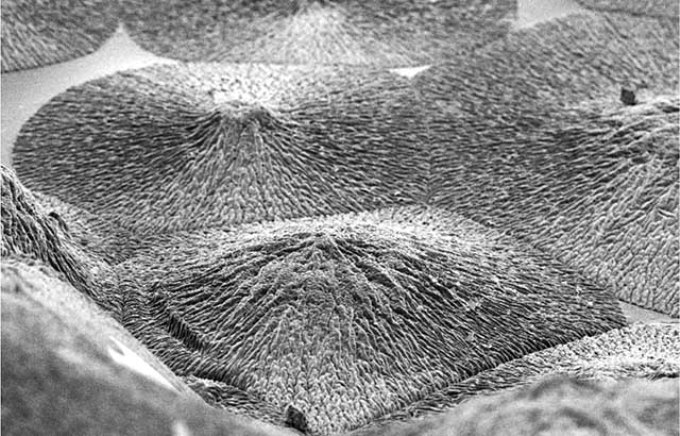Jun 4 2018
Scientists at the Queen Mary University of London have developed a new method to grow mineralized materials which could regenerate hard tissues such as bone and dental enamel.
 Scientists at the Queen Mary University of London have developed a new method to grow mineralized materials which could regenerate hard tissues such as bone and dental enamel.
Scientists at the Queen Mary University of London have developed a new method to grow mineralized materials which could regenerate hard tissues such as bone and dental enamel.
The outer part of the teeth is called the enamel, and it is the hardest tissue in the body and enables the teeth to function for a large part of one’s lifespan regardless of exposure to acidic foods and drinks, biting forces, and extreme temperatures. This significant performance results from its very organized structure.
However, in contrast to other tissues of the body, enamel cannot regenerate when it is lost, which can result in pain and tooth loss. These problems impact over 50% of the world’s population and so discovering ways to recreate enamel has long been a crucial necessity in dentistry.
The research, reported in Nature Communications, reveals that this new method can develop materials with outstanding precision and order that look and act like dental enamel.
The materials can be used for a wide range of dental complications such as the prevention and treatment of tooth decay or tooth sensitivity—also called dentin hypersensitivity.
This is exciting because the simplicity and versatility of the mineralisation platform opens up opportunities to treat and regenerate dental tissues. For example, we could develop acid resistant bandages that can infiltrate, mineralise, and shield exposed dentinal tubules of human teeth for the treatment of dentin hypersensitivity.”
Dr Sherif Elsharkawy, Queen Mary's University of London
Simple and versatile
The mechanism that has been established is based on a particular protein material that is able to stimulate and guide the growth of apatite nanocrystals at numerous scales - similar to the growth of crystals when dental enamel develops in the human body.
This structural organization is important for the exceptional physical properties displayed by natural dental enamel.
A major goal in materials science is to learn from nature to develop useful materials based on the precise control of molecular building-blocks. The key discovery has been the possibility to exploit disordered proteins to control and guide the process of mineralisation at multiple scales.
Through this, we have developed a technique to easily grow synthetic materials that emulate such hierarchically organised architecture over large areas and with the capacity to tune their properties.”
Professor Alvaro Mata, Lead Author
Mimic other hard tissues
Facilitating control of the mineralization process opens the prospect to develop materials with properties that mimic various hard tissues beyond enamel such as dentin and bone. As such, the study has the potential to be used in a range of applications in regenerative medicine.
Furthermore, the research also provides understanding into the role of protein disorder in human pathology and physiology.
The study was financed by the Marie Curie Integration Grant (BIOMORPH) and the European Research Council (ERC) Starting Grant (STROFUNSCAFF).